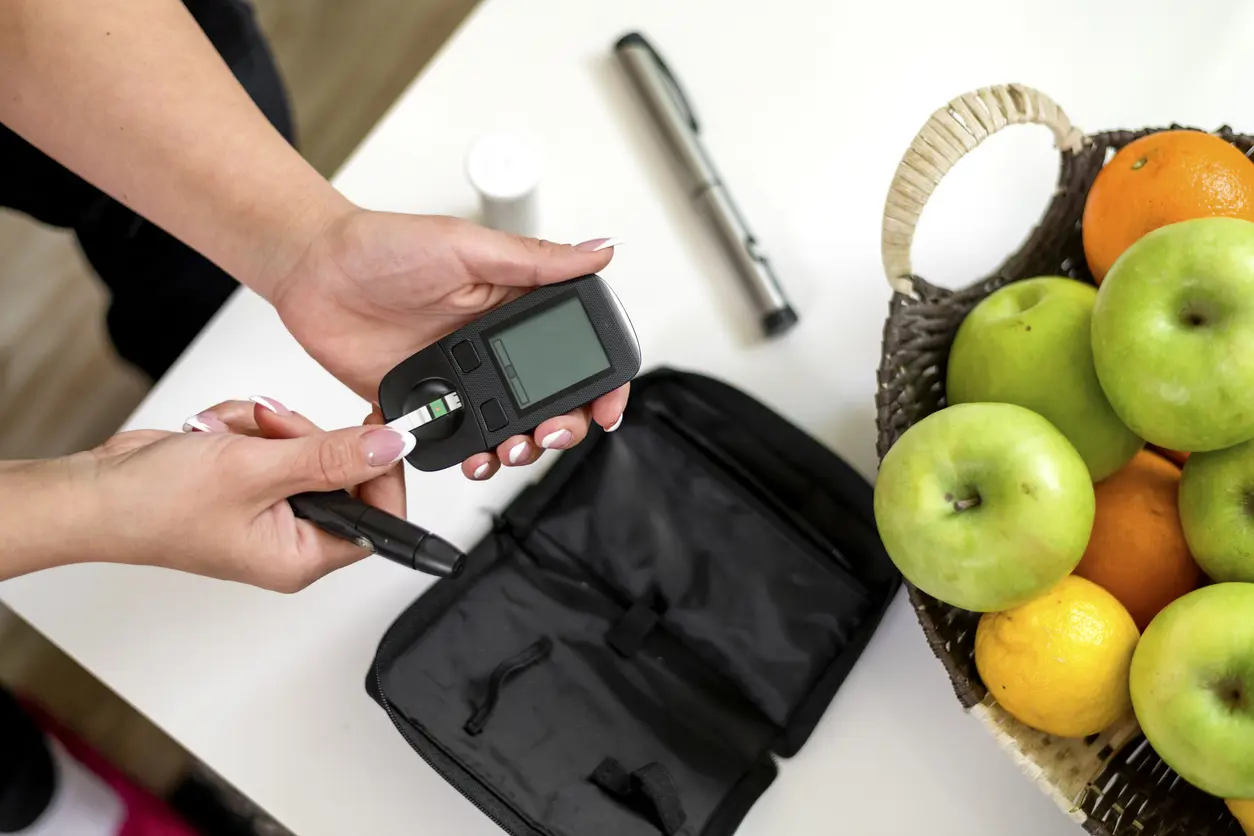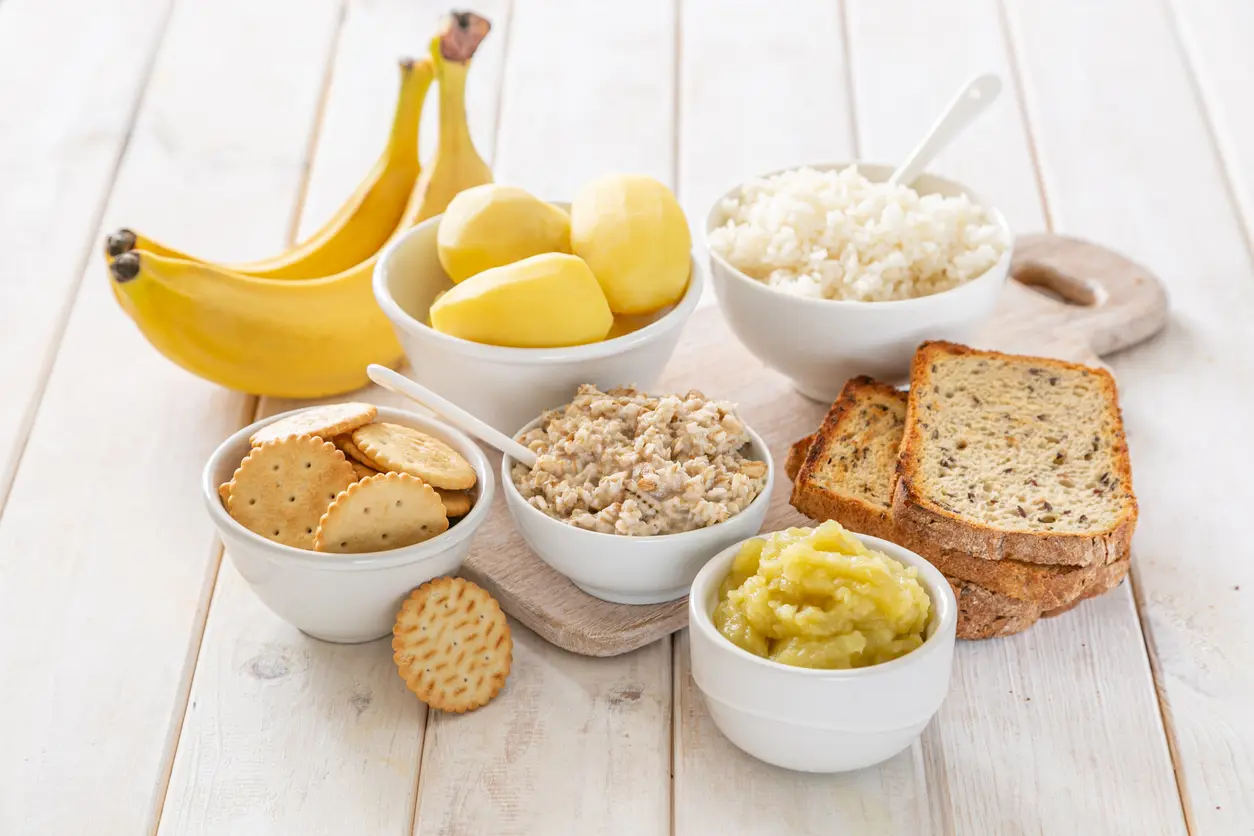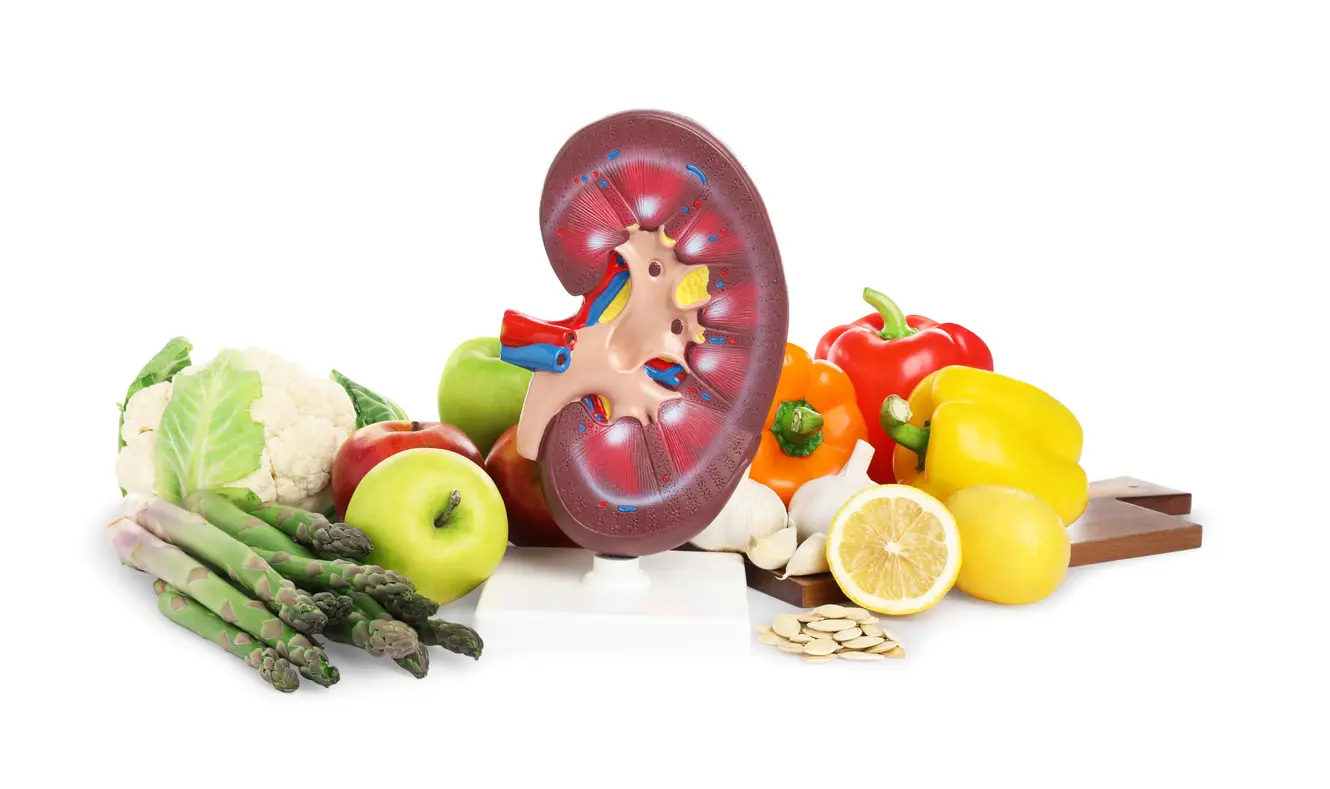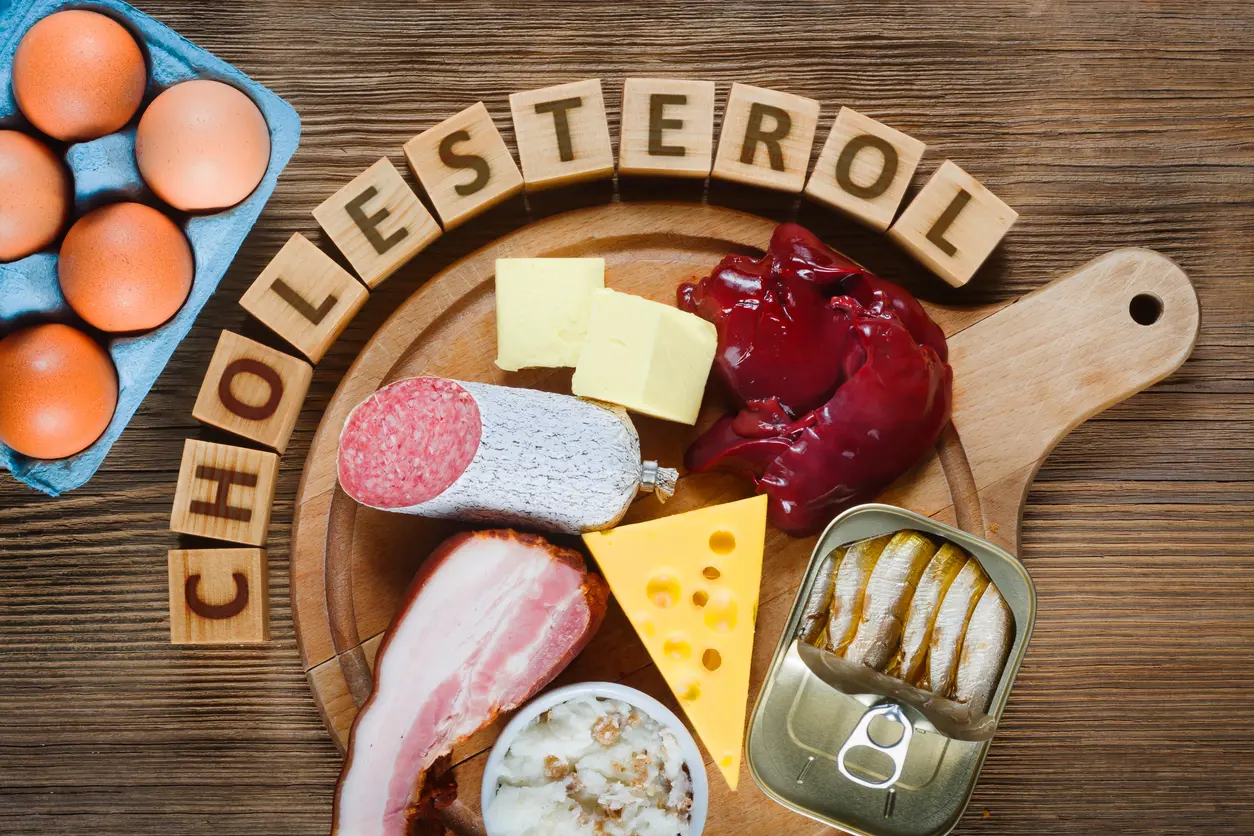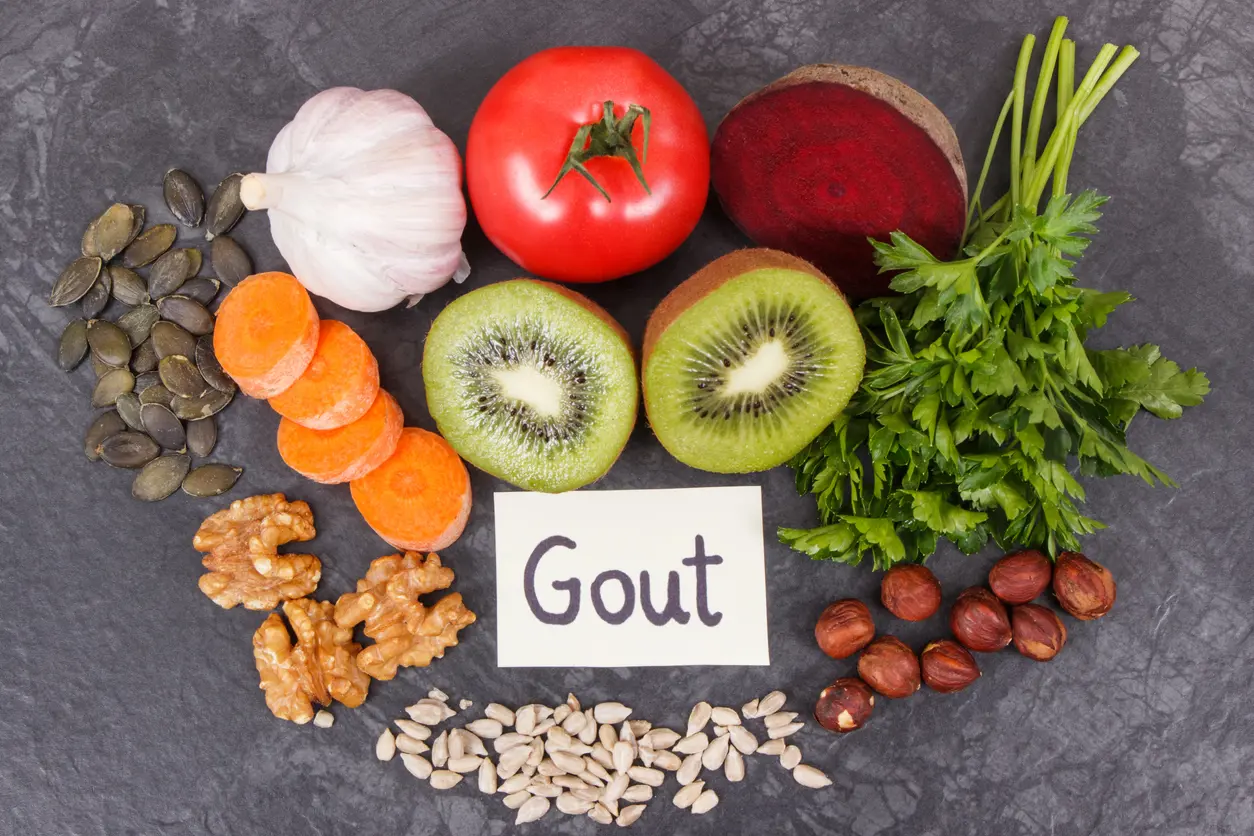
As someone struggling with gout, you might have wondered why your symptoms keep sticking around, even when you're trying so hard to keep a healthy diet. Gout is a form of inflammatory arthritis that happens in the presence of excess uric acid in the bloodstream. The excess uric acid can crystallize and take the shape of thin, needle-like structures, which get deposited in joints and lead to pain, swelling, and tenderness, usually in the big toe, ankles, or knees.
Many are shocked to discover that certain foods, even some that are “healthy”, can cause gout symptoms. Some foods are loaded with purines, which are transformed into uric acid by the body. A pro-inflammatory or purine-rich diet can set you up for painful gout flare-ups.
The good news? You can still enjoy a tasty and nourishing diet while controlling your gout. In this guide, we’ll walk you through the top foods to avoid with gout, and just as notably, what to eat to help reduce symptoms and support joint health.
Let's take the uncertainty out of mealtime when you have gout.
Foods to Avoid With Gout
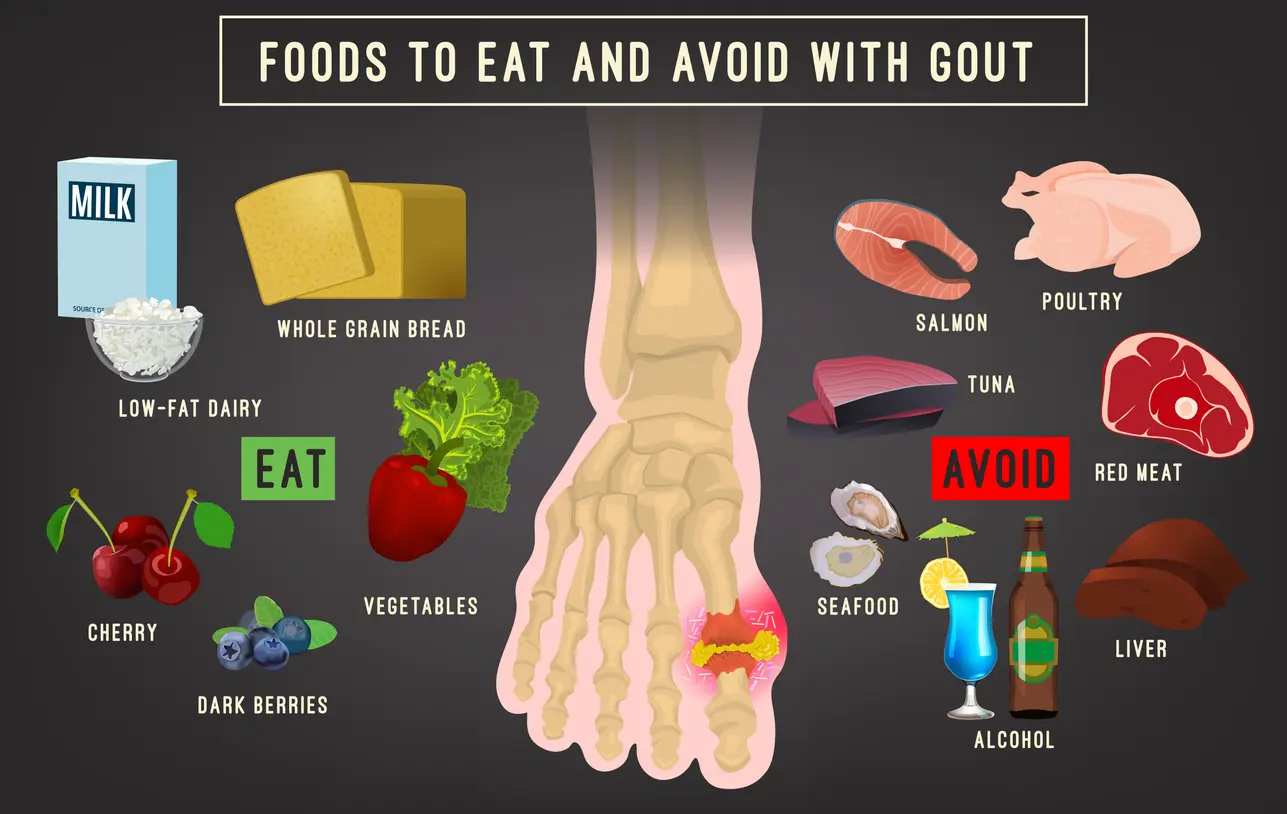
Some foods can increase uric acid or trigger inflammation, both of which can trigger gout attacks. While every individual's body responds differently, the following groups of foods are most commonly associated with flare-ups. The good news is that you can adopt simple, healthier options.
Red Meats and Organ Meats
Red meats such as beef, lamb, and pork, along with organ meats such as liver and kidneys, contain purine. These purines are broken down into uric acid, which can cause crystals to form in the joints. Organ meats contain excessive amounts of purines and should be totally eliminated from the diet for those suffering from gout. [1] Gout diet: What's allowed, what's not
What to eat instead: Try choosing lean poultry, like chicken or turkey, in moderation. Otherwise, opt for plant-based protein sources like lentils or tofu, which are eaten in moderation.
Shellfish and Small Oily Fish
Shellfish, such as mussels, shrimp, scallops, and small oily fish like anchovies, mackerel, and sardines are all high-purine foods. Research shows even small amounts of these ingredients can trigger uric acid surges. [2] Gout Low Purine Diet
What to eat instead: Opt for low-purine fish such as cod, tilapia, or haddock. They supply protein without significantly increasing uric acid.
Sugary Beverages

Beverages sweetened with high-fructose corn syrup, like soda, fruit drinks, and energy drinks, cause the liver to generate more uric acid. While fructose is not a purine, it alters how the body breaks down uric acid, which can lead to higher concentrations of it. [3] Rongrong Li, Kang Yu, Chunwei Li Dietary factors and risk of gout and hyperuricemia: a meta-analysis and systematic review. 2018
What to eat instead: Drink water, herbal teas, or unsweetened seltzer water with slices of fresh fruit for taste.
Alcohol
Alcohlic drinks, specifically beer and liquor, can increase the difficulty of the body excreting uric acid and introduce purines. Beer contains a lot of guanosine, a purine that significantly increases uric acid levels.
Drinking even small amounts of alcohol will worsen gout attacks in most individuals. [4] Foods to Avoid and Eat for Gout
What to eat instead: While having flare-ups, consume water or low-sugar drinks. Otherwise, have it in moderation and choose wine.
Processed Meat and Deli Items
Processed meats like cold cuts, hot dogs, bacon, and sausages are typically high in saturated fats and purines. They are typically loaded with sodium as well, which can lead to dehydration and inflammation, two that are likely to lead to gout. [2] Gout Low Purine Diet
What to eat instead: Go for roasted or grilled lean meats, or vegetable-based deli slices and wraps.
High-Fat Dairy Products
Whole milk, high-fat dairy, and heavy cream can cause inflammation because they are high in saturated fat and lack the gout-protective qualities that have been observed with low-fat dairy. While not purine-rich, a low saturated fat diet has been shown to support both joint and metabolic health. [1] Gout diet: What's allowed, what's not
What to eat instead: Use low-fat or fat-free milk products like cottage cheese, yogurt, or milk, since they have been found to lower the risk of gout.
Refined Carbs
Refined or simple carbohydrates found in foods like white bread, sweetened cereals, and baked goods prepared using refined flour contain little fiber and can spike blood sugar levels. Such foods are not particularly rich in purines but can lead to weight gain and chronic inflammation, which can cause gout symptoms over time. [3] Rongrong Li, Kang Yu, Chunwei Li Dietary factors and risk of gout and hyperuricemia: a meta-analysis and systematic review. 2018
What to eat instead: Replace refined carbs with whole grains such as brown rice, oats, and barley.
Yeast-Based Foods
Certain yeast foods, such as nutritional yeast, gravy cubes, and yeast extract spreads, have a high purine content. Although not as bad as red meats or seafoods, frequent intake can still add to the overall uric acid load. [2] Gout Low Purine Diet
What to eat instead: Use fresh herbs, lemon, or low-sodium broth to add flavor instead of yeast-based seasonings.
Certain High-Purine Vegetables
Vegetables like spinach, asparagus, and mushrooms have moderate purine content. Plant purines are safer than animal purines, yet research shows gout sufferers might still benefit from restricting intake while in a flare. [4] Foods to Avoid and Eat for Gout
What to eat instead: Switch to low-purine vegetables such as romaine, kale, zucchini, and bell peppers.
Salt-Heavy Processed Foods
Frozen foods, canned soup, fast foods, and snack packs have high salt and saturated fat content. These types of foods can promote water retention and metabolic stress and can lead to gout attacks. [3] Rongrong Li, Kang Yu, Chunwei Li Dietary factors and risk of gout and hyperuricemia: a meta-analysis and systematic review. 2018
What to eat instead: Try preparing food at home fresh foods that are minimally processed, with natural herbs and spices added for flavor.
What to Eat Instead
Treating gout isn’t just about eliminating high-purine foods from your diet, but also about making smart decisions around foods that can decrease uric acid, minimize inflammation, and lead to good nutrition.
Low-Fat or Nonfat Dairy
Low-fat dairy foods like cottage cheese, yogurt, and milk are linked to a reduced risk for gout. They promote more effective removal of uric acid from the bloodstream because of their calcium and protein content.
These foods do not lead to inflammation like whole-fat dairy foods. [5] Gout - NHS
How to eat them: Use plain yogurt instead of sugary yogurt or sherbert in smoothies, have nonfat milk on whole-grain cereal, or eat low-fat cottage cheese with fruit.
Cherries and Berries
Dark fruits like cherries, blueberries, blackberries, and raspberries contain powerful antioxidants named anthocyanins, which have been shown to reduce inflammation and uric acid levels. A study discovered that the consumption of cherries was linked with a 35 percent less risk of gout attack in patients. [6] 6 Strategies for Living with Gout | Gout Lifestyle Tips
How to eat them: Snack on fresh cherries, mix berries into oatmeal, or blend frozen berries into a refreshing smoothie.
Whole Grains
Whole grains like brown rice, oatmeal, and barley are low in purines and high in fiber. Consumption of whole grains instead of refined carbohydrates can improve metabolic health, an essential factor in the avoidance of gout attacks. [7] Yingling Zhang, Simin Chen, Man Yuan, Yu Xu, Hongxi Xu Gout and Diet: A Comprehensive Review of Mechanisms and Management 2022
How to eat them: Swap regular pasta or bread for whole wheat pasta and bread, put barley in soups, or serve brown rice alongside vegetables and lean protein.
Plant-Based Proteins
Beans, lentils, tofu, and other plant-based proteins still contain small amounts of purines, but are less likely to increase uric acid levels than animal proteins. These foods also contain fiber and phytonutrients that decrease inflammation when included in a balanced diet. [8] Boštjan Jakše, Barbara Jakše, Maja Pajek, Jernej Pajek Uric Acid and Plant-Based Nutrition. 2019
How to eat them: Add lentils to your salads and soups, try black bean tacos, or swap tofu in for chicken.
Leafy Greens and Cruciferous Vegetables
Unlike spinach and asparagus, which are higher in purines, leafy greens like kale, romaine, broccoli, and Brussels sprouts are uric acid-friendly, nutritional powerhouses. They're high in fiber and antioxidants without contributing to uric acid buildup. [7] Yingling Zhang, Simin Chen, Man Yuan, Yu Xu, Hongxi Xu Gout and Diet: A Comprehensive Review of Mechanisms and Management 2022
How to eat them: Stir-fry greens with garlic, mix kale into smoothies, or roast cruciferous vegetables for a tasty side dish.
Citrus Fruits and Vitamin C-Rich Options
Vitamin C can also lower the level of uric acid by increasing its excretion through the kidneys. Lemons, oranges, kiwi, and bell peppers are some of the fruits that have high vitamin C and fiber while being purine-free, making them very suitable for those who have gout. [9] Roswitha Siener Nutrition and Kidney Stone Disease - PMC 2021
How to eat them: Put orange slices in a salad, squeeze lemon over your water, or have a kiwi as an afternoon snack.
Nuts and Seeds
Nuts and seeds are a naturally purine-free food and supply healthy fat and anti-inflammatory properties. Studies show walnuts, chia seeds, and flaxseeds are especially good for cardiac and joint health. [6] 6 Strategies for Living with Gout | Gout Lifestyle Tips
How to eat them: Top your oatmeal with almonds or chia seeds, blend them into smoothies, or grab a handful of mixed nuts as a filling snack.
Water and Low-Sugar Fluids
Drinking water can essentially wash uric acid out of the body. Dehydration is a cause of gout; thus, proper hydration is one of the most vital lifestyle modifications for prevention. Lemon water and herbal teas are great low-purine options that encourage hydration. [5] Gout - NHS
How to drink them: Try for 8–10 cups a day. Add some slices of fruit to water for extra taste.
Coffee
Research shows that moderate coffee drinking can decrease the chances of getting gout. It could be because it influenced insulin sensitivity and the removal of uric acid. However, it is best to avoid adding too much cream or sugar. [10] Yuya Shirai, Akiyoshi Nakayama, Yusuke Kawamura, Yu Toyoda, Masahiro Nakatochi, Seiko Shimizu, Nariyoshi Shinomiya, Yukinori Okada, Hirotaka Matsuo; Japan Gout Genomics Consortium (Japan Gout) Coffee Consumption Reduces Gout Risk Independently of Serum Uric Acid Levels: Mendelian Randomization Analyses Across Ancestry Populations. 2022
How to drink it: Try it black or with a splash of low-fat milk, and stick to moderate amounts (1–2 cups daily).
Anti-Inflammatory Herbs
Ginger and turmeric have compounds that minimize joint inflammation and pain. They do not have a direct influence on the levels of uric acid, but consistent consumption might help improve the condition of gout. [8] Boštjan Jakše, Barbara Jakše, Maja Pajek, Jernej Pajek Uric Acid and Plant-Based Nutrition. 2019
How to eat them: Steep ginger tea, put turmeric in rice dishes, or include both in soups and stews.
Conclusion
Dealing with gout can feel limiting, particularly when it comes to food. But the reality is that eating foods low in purine can make it simpler. You can lessen the frequency and severity of gout attacks by not eating foods that increase uric acid or stimulate inflammation, and substituting them with healthy foods that fit your goals.
The changes you make to your eating habits don’t necessarily need to be extreme or very restrictive. Most foods beneficial for gout are tasty, healthy for your heart, aid in weight loss, and overall wellness. It's more about making conscious, frequent decisions that suit your way of life rather than adhering to rules.
If you're uncertain where to begin or wish to further restrict your diet, consider meeting with a registered dietitian or physician. Together, you can develop a sustainable and realistic plan that will benefit your long-term health and alleviate gout pain.
Guidelines for Managing Gout with Diet
- Drink 8-10 cups of water daily to flush out uric acid from the body.
- Limit alcoholic, sugary drinks, and other high-purine foods.
- Avoid crash dieting or fasting, which can increase uric acid levels.
- Eat regular, balanced meals to stabilize your metabolism and uric acid levels.
- Pair protein with whole grains and vegetables to reduce purine impact and assist with satiety.
Was this article helpful?
-
Gout diet: What's allowed, what's not;
https://www.mayoclinic.org/healthy-lifestyle/nutrition-and-healthy-eating/in-depth/gout-diet/art-20048524 -
Gout Low Purine Diet;
https://my.clevelandclinic.org/health/treatments/22548-gout-low-purine-diet -
Dietary factors and risk of gout and hyperuricemia: a meta-analysis and systematic review.; Rongrong Li, Kang Yu, Chunwei Li; ( 2018 )
https://pubmed.ncbi.nlm.nih.gov/30485934/#:~:text=Results%3A%20Meta%2Danalysis%20revealed%20several,CI%200.76%2D0.96)%3B%20high%2D -
Foods to Avoid and Eat for Gout;
https://www.arthritis.org/health-wellness/healthy-living/nutrition/healthy-eating/foods-to-avoid-for-gout -
Gout - NHS;
https://www.nhs.uk/conditions/gout/ -
6 Strategies for Living with Gout | Gout Lifestyle Tips;
https://www.health.harvard.edu/diseases-and-conditions/living-with-gout -
Gout and Diet: A Comprehensive Review of Mechanisms and Management; Yingling Zhang, Simin Chen, Man Yuan, Yu Xu, Hongxi Xu; ( 2022 )
https://pmc.ncbi.nlm.nih.gov/articles/PMC9459802/ -
Uric Acid and Plant-Based Nutrition.; Boštjan Jakše, Barbara Jakše, Maja Pajek, Jernej Pajek; ( 2019 )
https://pubmed.ncbi.nlm.nih.gov/31357560 -
Nutrition and Kidney Stone Disease - PMC; Roswitha Siener; ( 2021 )
https://pmc.ncbi.nlm.nih.gov/articles/PMC8229448/ -
Coffee Consumption Reduces Gout Risk Independently of Serum Uric Acid Levels: Mendelian Randomization Analyses Across Ancestry Populations.; Yuya Shirai, Akiyoshi Nakayama, Yusuke Kawamura, Yu Toyoda, Masahiro Nakatochi, Seiko Shimizu, Nariyoshi Shinomiya, Yukinori Okada, Hirotaka Matsuo; Japan Gout Genomics Consortium (Japan Gout); ( 2022 )
https://pubmed.ncbi.nlm.nih.gov/35348303/



